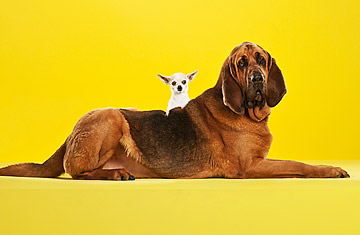
(2 of 7)
True animal friendship is not about the neighborhood dogs' playing and wrestling when their owners take them to the park any more than true human friendship is about the pickup soccer game a group of kids play in an adjacent field. There's an improvised, on-the-fly quality to those interactions, and while they're sociable enough, they're limited to the moment. Animal friendship is about enduring bonds defined by sharing, sacrificing and, when circumstances warrant it, grieving. Not all animal friends exhibit all those behaviors, but they exhibit enough of them--with enough consistency--that something deep is clearly going on.
However widespread animal friendship is, it is changing our assumptions about how nonhuman societies work. It could also change the way we think about our friendships--and even about our health. It's well established that having close friends can contribute to a longer life and a lower incidence of disease, but it's never been easy to establish why. Studies of animals might provide some answers. Even before that work is done, though, one thing is clear: humans have always known that it's hard to get through life without friends, and it appears that animals are wise to that secret too.
Stalking the Wild Friend
In the field of animal-friendship research, charismatic critters like dolphins and chimpanzees get a lot of the attention, but it's baboons--far more distantly related to us than the great apes--that have provided some of the most powerful insights. In the late 1990s, UCLA anthropologist Joan Silk was working with Princeton primatologist Jean Altman on a long-term study of savanna baboons in Kenya's Amboseli National Park. At first, Silk and her colleagues focused on individual baboons, noting such things as their hierarchy in the troop and how often they were groomed by other monkeys. But then Silk wondered about the relationships among the individuals. Were they all the same, or did each baboon have different relationships with different individuals?
Silk came up with a painstaking method for measuring the strength of the relationships between primates. She and her colleagues went back through their records and randomly selected hundreds of observations of each female baboon from years of fieldwork. Then they determined how often that baboon was sociable--sitting near another individual or grooming it, say--and noted which baboon was pairing off with which. When the scientists crunched the data, they discovered a complex social world they hadn't noticed before. "They have very strong relationships with some females and weak relationships with others," says Silk. In many cases, the strongest bonds were between unrelated females, and those lasted years. To describe these relationships, Silk, who arrived at the work as a skeptic of the whole idea of animal friendship, at last began to use what she calls the F word.
